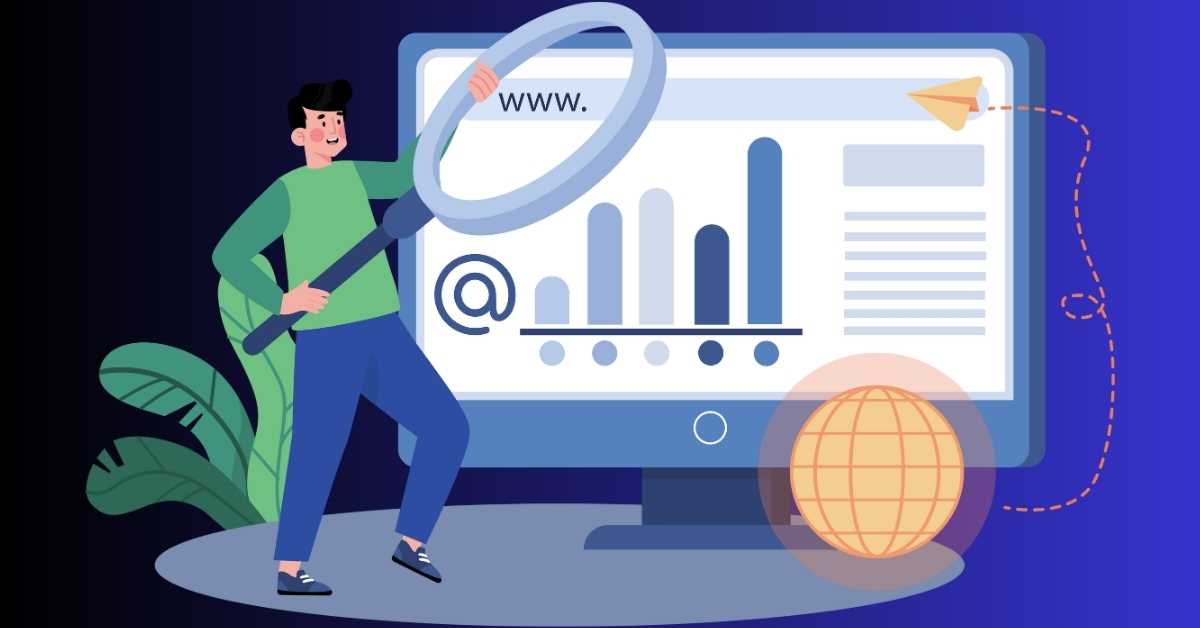Experiencing a sudden drop in website traffic can be a nightmare for any website owner. Whether your site is your primary business, a personal blog, or a digital portfolio, watching your hard-earned traffic vanish overnight can be both confusing and frustrating. However, while a traffic drop can be alarming, it’s important to remember that it is often temporary and, in most cases, entirely fixable. This comprehensive guide will walk you through the potential causes of traffic drops and the steps you can take to diagnose, address, and ultimately recover from them.
Understanding the Causes of Traffic Drops
A sudden drop in website traffic can be unsettling, especially when it disrupts the flow of visitors to your site and impacts your bottom line. However, understanding the potential causes behind these dips is the first step toward recovery. By identifying what’s behind the traffic drop, you can take targeted actions to rectify the situation and prevent future occurrences. Let’s explore some of the most common reasons why website traffic might suddenly decline.
1. Google Algorithm Updates
Google frequently updates its search algorithms to improve the quality of search results. These updates can significantly impact website rankings, often leading to sudden and substantial traffic changes. For example, the September 2023 “Helpful Content” update targeted low-quality or unhelpful content, causing many websites to lose their rankings.
Impact: If your website’s content doesn’t align with the latest algorithm criteria, it may be de-ranked, resulting in less visibility and reduced traffic.
Solution: Monitor algorithm updates using tools like Mozcast or Google Search Console. If an update has affected your rankings, re-optimize your content to align with Google’s latest standards.
2. Website Redesign Technical Issues
A website redesign can breathe new life into your online presence, but it can also introduce technical issues that harm your SEO. Changes in URL structures, broken internal links, missing redirects, or errors in the sitemap can all lead to decreased visibility on search engines.
Impact: If search engines struggle to crawl your site or if users encounter broken links, your rankings can drop, leading to a loss in traffic.
Solution: Conduct a thorough technical SEO audit before and after the redesign to ensure that all pages are properly redirected, the sitemap is updated, and there are no crawl errors. Ensure that any changes made do not negatively impact load times or mobile responsiveness.
3. Competitive SEO Strategies
In a competitive online environment, it’s possible that your competitors have stepped up their SEO game. If they have optimized their content more effectively or targeted keywords more aggressively, they may outrank you on search engine results pages (SERPs).
Impact: Losing top positions on SERPs can lead to a significant reduction in organic traffic, especially if competitors capture the majority of clicks for key search terms.
Solution: Regularly conduct competitor analysis to stay ahead of the competition. Identify the keywords and strategies your competitors are using and optimize your content to be more comprehensive, valuable, and engaging.
4. Outdated or Poor SEO Strategy
SEO is constantly evolving, and what worked a few years ago may no longer be effective. If your SEO strategy hasn’t been updated to reflect the latest trends—such as mobile-first indexing, voice search, or user experience (UX) factors—you may see a decline in traffic.
Impact: A stagnant or outdated SEO strategy can result in lower rankings, reduced visibility, and a loss of organic traffic.
Solution: Continuously update your SEO strategy to incorporate new best practices. Focus on optimizing for mobile users, improving page speed, and creating high-quality, user-focused content.
5. Low-Quality Backlinks
Backlinks are an important ranking factor, but not all backlinks are beneficial. If your website has accumulated a significant number of low-quality or spammy backlinks, search engines may penalize you. Google, for instance, may push your site down in the rankings if it detects unnatural backlink patterns.
Impact: Penalties from low-quality backlinks can cause a sharp decline in your site’s rankings and traffic. In extreme cases, your site could be de-indexed from search engines altogether.
Solution: Conduct a thorough backlink audit using tools like Ahrefs or Moz Link Explorer. Identify and disavow low-quality or harmful backlinks to protect your site’s reputation and rankings.
6. Content Issues
Content is king in the digital world, but if your content is outdated, irrelevant, or lacks depth, it may no longer rank well. Additionally, duplicate content, either within your site or across different domains, can lead to penalties and reduced visibility.
Impact: Poor content quality or duplicate content can result in lower rankings, causing a drop in traffic.
Solution: Regularly update and expand your content to keep it relevant and valuable. Use canonical tags to address duplicate content issues and ensure that each piece of content on your site is unique and informative.
7. Seasonal Trends and External Factors
Sometimes, traffic drops are caused by factors beyond your control, such as seasonal trends or changes in consumer behavior. For example, if you sell winter apparel, it’s natural to see a drop in traffic during the summer months.
Impact: Traffic fluctuations due to seasonal trends or external factors can cause temporary dips in visitors to your site.
Solution: Analyze historical traffic data to understand seasonal patterns. Adjust your content and marketing strategies to align with these trends, ensuring that you’re targeting the right audience at the right time.
Steps to Recover from Traffic Drops
When your website experiences a sudden drop in traffic, it can be both alarming and disruptive. However, with a strategic approach, you can diagnose the problem, take corrective action, and recover your lost traffic. Here’s a detailed guide on the steps you should follow to restore and even enhance your website’s performance.
1. Diagnose the Cause of the Traffic Drop
The first and most critical step in recovering from a traffic drop is identifying the root cause. This will guide your recovery efforts and help prevent further declines.
Check for Algorithm Updates
- Use Tools: Monitor tools like Mozcast, SEMrush Sensor, or Google Search Console to track any recent Google algorithm updates that could have affected your rankings.
- Cross-Reference Dates: Compare the timing of your traffic drop with the dates of known algorithm updates. If they align, your drop may be due to a change in how Google ranks sites.
Review Recent Changes
- Website Redesign: If you’ve recently redesigned your site, examine the changes made. Look for broken links, incorrect redirects, or structural changes that could impact SEO.
- Content Updates: Check if significant content changes have been made, such as removing or rewriting key pages that previously ranked well.
Analyze Competitor Activity
- Competitor Analysis: Use tools like Ahrefs or SEMrush to analyze competitors who may have overtaken your rankings. See what keywords they are targeting and how their content compares to yours.
- Keyword Research: Identify any new keywords your competitors are ranking for that you’re not, and consider updating your content strategy accordingly.
Perform a Technical SEO Audit
- Use Crawlers: Utilize technical SEO tools like Screaming Frog or Sitebulb to perform a comprehensive audit. Look for crawl errors, broken links, missing meta tags, and issues with your robots.txt file.
- Check Mobile Optimization: Ensure that your site is mobile-friendly, as poor mobile usability can lead to lower rankings and traffic loss.
2. Take Immediate Corrective Actions
Once you’ve identified the root cause of the traffic drop, it’s time to implement corrective measures.
Fix Technical SEO Issues
- Correct Redirects: Ensure that all old URLs are properly redirected to their new counterparts using 301 redirects. Test these redirects to confirm they’re working as intended.
- Update Sitemaps: Submit an updated XML sitemap to Google via Google Search Console. This helps search engines re-index your pages correctly.
- Improve Page Load Speed: Optimize images, minify CSS and JavaScript files, and reduce server response time to improve your site’s loading speed. Use Google’s PageSpeed Insights to guide your optimizations.
Re-optimize Affected Pages
- Keyword Optimization: Revisit the keywords that were driving traffic to the affected pages. Update content to include relevant, high-performing keywords, and improve internal linking to boost these pages.
- Content Quality: Enhance the quality of your content by adding more depth, updating outdated information, and making it more comprehensive than competing pages.
Address Backlink Issues
- Backlink Audit: Perform a detailed audit of your backlink profile using tools like Ahrefs or Moz. Identify any spammy or low-quality links that could be harming your site’s rankings.
- Disavow Harmful Links: Use Google’s Disavow Tool to disassociate your site from toxic backlinks. This helps prevent penalties and can improve your site’s standing in search results.
- Build High-Quality Links: Focus on acquiring backlinks from reputable websites within your industry. High-quality backlinks can significantly boost your SEO and help recover lost traffic.
3. Monitor and Adjust Your Strategy
After implementing the necessary changes, continuous monitoring is essential to ensure that your efforts are effective and to make further adjustments as needed.
Track Performance Metrics
- Google Analytics: Use Google Analytics to track changes in traffic, bounce rate, and user behavior. Pay close attention to metrics like pageviews, average session duration, and conversion rates.
- Google Search Console: Monitor your site’s search performance, looking at metrics like click-through rates (CTRs), keyword rankings, and any new indexing issues.
Test and Refine Your Strategy
- A/B Testing: Implement A/B testing for different content strategies, page layouts, and keyword targeting. This helps you determine what changes are most effective in improving traffic.
- Iterative Improvements: Based on the data gathered, make incremental improvements to your SEO strategy. This could include updating content, improving site structure, or refining your keyword targeting.
4. Diversify Your Traffic Sources
Relying solely on organic search traffic can make your site vulnerable to algorithm changes and competitive shifts. Diversifying your traffic sources can help stabilize your traffic and reduce risk.
Utilize Paid Advertising
- Google Ads: Run targeted pay-per-click (PPC) campaigns to drive traffic to your site while your organic traffic recovers.
- Social Media Ads: Use platforms like Facebook, Instagram, or LinkedIn to run ads that target your specific audience demographics.
Leverage Social Media
- Content Promotion: Regularly share your content on social media platforms to reach a broader audience and drive referral traffic to your site.
- Engagement: Engage with your audience on social media to build brand loyalty and encourage sharing of your content.
Implement Email Marketing
- Newsletter Campaigns: Use email newsletters to keep your audience informed about new content, products, or services. This can drive consistent traffic to your site.
- Drip Campaigns: Set up automated email sequences that nurture leads and encourage repeat visits to your website.
5. Plan for Long-Term Stability
Finally, once your traffic starts to recover, focus on building long-term stability for your website.
Regular SEO Audits
- Routine Checks: Schedule regular SEO audits to catch issues before they become significant problems. This includes technical SEO, content quality, and backlink audits.
- Stay Updated: Keep abreast of the latest SEO trends, algorithm updates, and industry changes to ensure your site remains competitive.
Content Strategy Development
- Evergreen Content: Invest in creating evergreen content that remains relevant over time and continues to attract traffic long after it’s published.
- Content Calendar: Develop a content calendar that ensures consistent publication of high-quality, relevant content. This helps maintain audience engagement and search engine visibility.
User Experience Optimization
- UX Improvements: Continuously optimize your website’s user experience by making it easy to navigate, fast-loading, and visually appealing.
- Mobile Optimization: With the increasing number of mobile users, ensure that your site offers a seamless mobile experience.
A sudden drop in website traffic can be a daunting experience, but it’s not the end of the world. By systematically diagnosing the problem and applying targeted solutions, you can not only recover lost traffic but also strengthen your site’s overall performance. Whether the issue lies in a Google algorithm update, technical SEO problems, or outdated content strategies, there are clear steps you can take to get your traffic—and your peace of mind—back on track.
Remember, SEO is a marathon, not a sprint. Consistent monitoring, ongoing optimization, and a willingness to adapt are key to maintaining and growing your website’s traffic in the long term. With the right approach, you can turn a traffic drop into an opportunity for improvement and growth.



